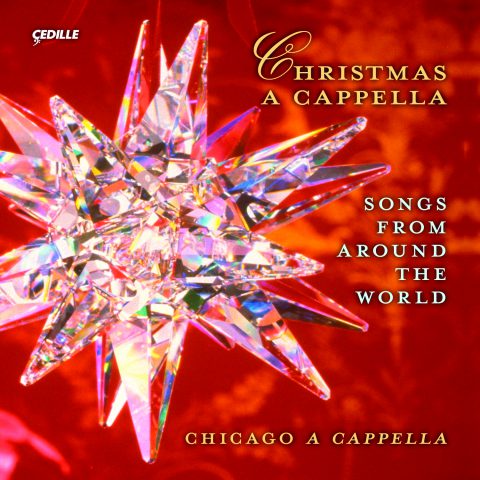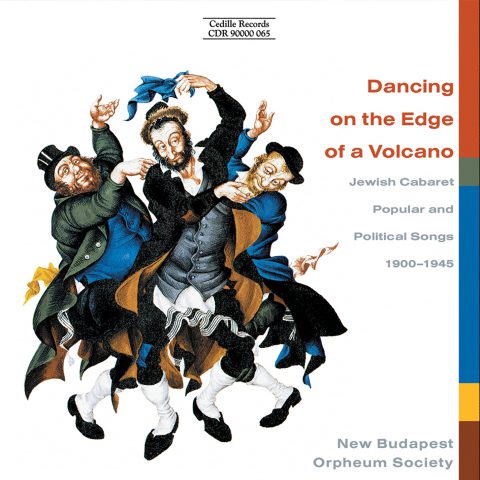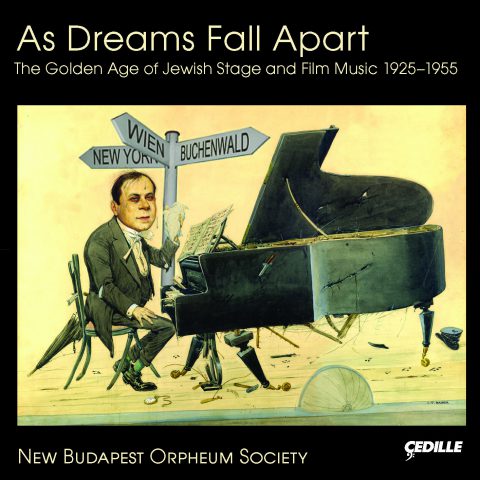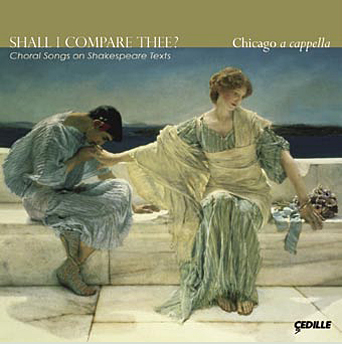Store
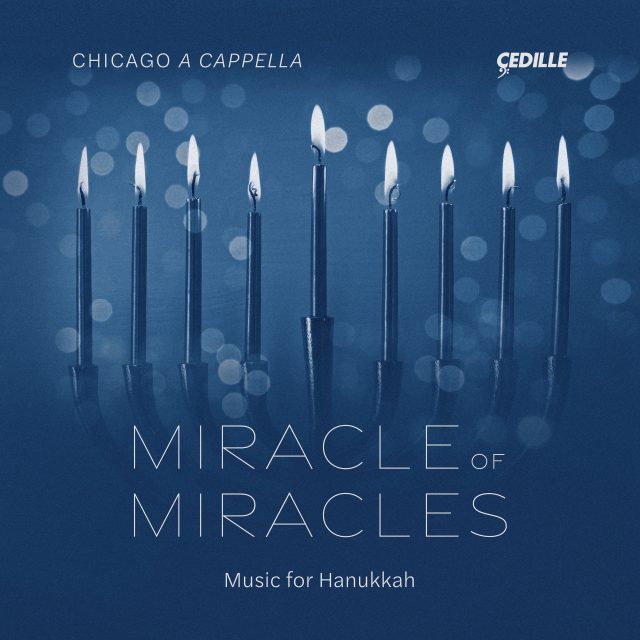
Store
Miracle of Miracles — Music for Hanukkah
Chicago a cappella, the innovative vocal ensemble praised for its “clarity, well-balanced tone, and deep emotional involvement” (Washington Post), presents Miracle of Miracles — Music for Hanukkah, a new recording aimed at unveiling the richer meaning of the Festival of Lights, with music that ranges from heartfelt prayers to jazzy and playful holiday favorites, showcasing the creativity and vitality of American Jewish musical traditions.
The album features a collection of songs from more than 25 years of Chicago a cappella performances, arranged into a single program that replays the story of Hanukkah, from celebrations of the holiday itself through to its candles, miracles, religious observances, and traditional food and games.
Collectively in search of Hanukkah songs from different Jewish traditions and communities, seven living composers/arrangers/musicians including Robert Applebaum, Gerald Cohen, Joshua Fishbein, Elliot Z. Levine, Jonathan Miller, Daniel Tunkel, and Mark Zuckerman bring fresh perspectives to songs celebrating the miracle of light.
Rich with liturgical and folk melodies, Miracle of Miracles — Music for Hanukkah demonstrates a keen sensitivity to both biblical and modern Hebrew, as well as Yiddish elements (and English) intertwined with American jazz and popular styles. The vocal network represented on this album fully encompasses the traditions of Hanukkah across the Diaspora and Jewish history.
Works include Robert Applebaum’s stirring version of “Haneirot Halalu” and movements from the majestic “Hallel Cantata” by London-based Daniel Tunkel. Other familiar tunes include arrangements of “I am a Little Dreydl” both in its traditional Yiddish form, as arranged by Zuckerman, and in a neo-funk Hebrew/English setting titled “Funky Dreidl” arranged by Applebaum; a swing version of “S’vivon” by Steve Barnett; and a lively setting of the traditional melody for “Al HaNisim” (“For the Miracles”) by Levine.
Chicago a cappella, under the direction of John William Trotter, is an ensemble of ten singers that performs a wide-ranging repertoire of musical styles and genres from the ninth to the 21st centuries. Founded in 1993, the group features a roster of the Chicago area’s most accomplished classically trained choral singers and soloists, whose flexible vocal skills and musical adventurousness bring a special joy to their performances.
Miracle of Miracles joins Chicago a cappella’s two previous Cedille releases, Shall I Compare Thee: Choral Songs on Shakespeare Texts and Christmas a cappella. Produced by the Grammy-winning team of producer James Ginsburg and engineer Bill Maylone, Miracle of Miracles was recorded January 13 and 16–18, 2023, at Northeastern Illinois University, Chicago.

Listen to Jim Ginsburg’s interview
with John William Trotter on Cedille’s
Classical Chicago Podcast
Preview Excerpts
TRADITIONAL (ARR. ROBERT APPLEBAUM)
TRADITIONAL (ARR. STEVE BARNETT)
TRADITIONAL (ARR. MARK ZUCKERMAN)
GERALD COHEN
ROBERT APPLEBAUM
TRADITIONAL (ARR. ELLIOT Z. LEVINE)
TRADITIONAL (ARR. APPLEBAUM)
JOSHUA FISHBEIN
DANIEL TUNKEL
from Hallel Cantata*
TRADITIONAL (ARR. APPLEBAUM)
ELLIOT Z. LEVINE
VLADIMIR HEYFETZ (ARR. ZUCKERMAN)
SAMUEL E. GOLDFARB (ARR. APPLEBAUM)
MIKHL GELBART (ARR. ZUCKERMAN)
JONATHAN M. MILLER
CHAIM PARCHI (ARR. JOSHUA JACOBSON)
STACY GARROP
Artists
Program Notes
Download Album BookletNotes by Jonathan Miller, Artistic Director Emeritus
Why, you might ask, aren’t there more albums of Hanukkah music like this? Finding the music is a big part of the challenge. It’s hard to locate works that meet all of our criteria: superb musical craftsmanship, a Hanukkah text, and a setting for a cappella mixed choir. The difficulty has many contributing factors. Culturally, Hanukkah is much more about the home than the synagogue. When we think of Hanukkah, we think of candles, latkes (potato pancakes), gifts, time spent with extended family, and maybe folk melodies… but not a choir. To be sure, there are special prayers said on Hanukkah, and many songs on this album come from the prayers inserted into the liturgy on this occasion. But Hanukkah is a minor holiday, even though it has become the most visible Jewish holiday since Jews became assimilated into wider culture — especially in America. In addition, Jewish choral music is a recent phenomenon, begun in earnest only about 200 years ago in Berlin, so there’s a simple quantity issue: we have much less repertoire to peruse than in other choral traditions. Given all of this, we are especially grateful for the composers and arrangers whose persistence and skill have given us the works found here. Enjoy, baz’man ha-zeh — in this season — and may this album brighten your days and nights of Hanukkah for many years to come.
Notes by John William Trotter, Artistic Director
Chicago a cappella is known for its varied programs, frequently combining music from various centuries, styles, and regions. While all of our singers are classically trained, each also has considerable range, allowing us to stretch well beyond the varied genres often lumped together as “classical,” into jazz, pop, folk, and many others.
With this context in mind, a glance at the track list may make this Hanukkah project seem uncharacteristically focused for our ensemble. After all, all of the texts are from a single religious and cultural tradition, and all are related to a single celebration. Look more closely, however (or even better, listen), and you’ll find a sprawling variety of styles.
There are at least two reasons for this breadth. On the one hand, we are in debt to the fertile imaginations of our composers, who envisioned so many different sound worlds and so many different ways to clothe these texts. But there is also the nature of Hanukkah itself, which offers so many different modes of personal, social, and spiritual practice. Consider just three of these. Hanukkah offers the chance to reflect on the historical significance of the Maccabean revolt, with its consequences echoing through to the present day. It invites quiet contemplation of the candle flames, set aside from any utilitarian purpose. And it provides an opportunity to gather with family and have a really great party with really great food.
Recording a CD is an exacting and demanding process. But our time together in the studio on this project was frequently light, even joyful, as we entered into these worlds in turn. We hope you enjoy our wholehearted approach to this music, from solemn and reflective to playful and even downright raucous.
Notes on the program
Notes by Philip V. Bohlman
Hanukkah songs are remarkable for the ways they chronicle Jewish history, especially across the Diaspora while, at the same time, they celebrate the most intimate moments of family holiday in the Jewish home. Historical tales of resistance and survival combine with the moments when Jewish communities become modern. Hanukkah songs are distinctive because they sound ongoing narratives of interaction between the Jewish community and the wider world. They bear witness to the special power of song, providing a foundation for pillars of identity while also opening doors that welcome exchange.
Such power of song is especially distinctive in Hanukkah songs, for they so often arise along borders that signal difference. Linguistic borders do not splinter songs into fragmentary repertories; quite the contrary, for Hanukkah songs come in many languages, and often combine them. Ritual borders that would separate the secular from the sacred become permeable, such that ritual practice becomes common to daily life and worship. Hanukkah songs sound across the Jewish community, in synagogue and home alike. And surely no less important for the ways in which Hanukkah songs enter the modern world is that they resound far beyond the borders of the Jewish community.
Among religious observances, Hanukkah is a feast rather than a holiday with sacred obligations. The story of the rededication of the Second Temple in Jerusalem in the second century BCE appears in First and Second Maccabees, neither of which is included in the rabbinically sanctioned Masoretic text of the Tanach, or Hebrew Bible, thus again deflecting Hanukkah’s religious significance. Despite, or even because of, such distinctions, Hanukkah has increased in popularity over time because of the ways it connects religious history to secular life. The customs, languages, culture, and songs of Jewish secular life thus came to exert an extensive influence on the celebration of Hanukkah, progressively enhancing its popularity, especially in the modern Diaspora. Hanukkah songs were among the most important documents of this transformation, so much so that in many modern communities, song — especially communal, collective, and choral — has become the primary means of celebrating the holiday.
We first become aware of Hanukkah songs in an expanding modern corpus and canon around the time of the Jewish Enlightenment, the Haskalah (ca. 1770–1870). It was during the Haskalah that a broader range of musical practices generally entered the Jewish communities of Central and Eastern Europe from earlier oral traditions. Cantorial practices appeared in print, with versions of liturgical song from various communities published side-by-side. During this same period, folk songs were gathered as canonic repertories, and Jewish folk song entered the secular realms made possible by such collections. The choral movements of the 19th century — in Europe and in North America — accelerated because of the influence of Romanticism and nationalism, and parallel choral movements expanding into Jewish communities by the mid-19th century. Such modern musical activities in 19th -century Jewish communities flourished because of an accompanying growth in publishing. By the 1880s, there was a virtual explosion in the publication of Jewish song books, which, in turn, further undergirded the formation of canonic repertories. The influence of published song books has been lasting, and we recognize it even in the songs collected and arranged for this recording. For example, the sources for “Funky Dreidl” and “Oh Chanukah” come from perhaps the most important collection of Jewish songs from the early and mid-20th century: Harry Coopersmith’s 1950 The Songs We Sing, whose 453 pages of Jewish song compiled a vast repertory built upon numerous Jewish song books containing collections from American immigrant communities in the first half of the 20th century.
Among such repertories, few were as visible as Hanukkah songs, which often appeared in sections dedicated to the parsing of the “Jewish year.” Published volumes of Jewish song not only made it possible to share Jewish song repertories across the holidays and among different communities, they also laid the foundations for new arrangements, especially for Jewish choral societies. As one of the most important among the published repertories, Hanukkah songs played a significant role in generating new networks for the performance of Jewish music in sacred and secular spheres, within the community and beyond. The cantors, composers, arrangers, and choral directors who populated these networks contributed critically to the creation of what we now know as the modern Hanukkah repertory.
The 21st -century network that together created the present CD has been critical in the very same ways. Collectively in search of Hanukkah songs from different Jewish traditions and communities, these composers, arrangers, conductors, and musicians have forged a repertory that is fresh and modern, respectful of the past and hopeful in the present. Many threads connect those shaping the sound of Hanukkah on this CD. The composers/arrangers/musicians who here shine new light on songs about the miracle of light — Robert Applebaum, Gerald Cohen, Joshua Fishbein, Elliot Z. Levine, Jonathan Miller, Daniel Tunkel, Mark Zuckerman — come from different traditions and their careers have followed distinctive paths. There is so much in what they have created that makes Hanukkah songs resonate for us anew. Liturgical and folk melodies abound, conveying sensitivity to Hebrew, both biblical and modern, and a Yiddish in conversation with the vernacular of American jazz and popular idioms. The vocal network represented on this album fully encompasses the traditions of Hanukkah across the Diaspora and Jewish history, while Chicago a cappella offers ensemble singing that affirms the spirit of the holiday in this musical offering.
The Songs
1 Oh Chanukah / Y’mei Hachanukah (Arr. Robert Applebaum)
There are surely many reasons that “Oh Chanukah” is probably the most popular of all Hanukkah songs. Although it circulates widely as a children’s song — and, indeed, contains all the elements that gather the musical talents of young voices — “Oh Chanukah” boasts a history of countless versions and variants, all of them enjoying popularity at specific times and places. These modern versions of the song form from the confluence of at least two streams, the first springing from Hebrew lyrics, the second flowing together from Yiddish and English sources. Turning again to Harry Coopersmith’s mid-20th-century collection, Robert Applebaum channels striking elements from these different streams, to create something of a mash-up of “Oh Chanukah’s” popularity.
2 S’vivon / Little Dreydl (Arr. Steve Barnett)
It is with the songs about the dreydl and the s’vivon — Yiddish and Hebrew for spinning top — (more of which are heard later in the program) that Hanukkah traditions and songs most demonstrably blur the borders between the sacred and the secular. The s’vivon is the symbol of the miracle of Hanukkah: when it comes to rest, the symbolism that the miracle happened there in Jerusalem is signified by the Hebrew letters on the sides of the dreydl (nun, gimmel, hey, shin — נֵס גָּדוֹל הָיָה שָׁם — “a great miracle happened there”). The Hebrew folk song version of “S’vivon” on this track itself bears witness to the complexities of the miracle’s geography, for it is most common that Hebrew versions refer to a miracle happening “here” rather than “there” [sham]. “S’vivon” is a Hanukkah song that calls attention to the transformation of the historical past into the landscapes of diasporic modernity. Barnett’s arrangement is unusual because it takes the standard folk melody and infuses jazz harmonies and a swing rhythm.
3 O, Ir Kleyne Likhtelekh / O, You Little Candle (Arr. Mark Zuckerman)
The emergence of modern Hanukkah song from published collections of Jewish song in the 19th century is again documented with “O, Ir Kleyne Likhtelekh.” Mark Zuckerman turns to a traditional Yiddish lyrical account of the miracle of light, which the great Jewish poet and lyricist, Morris Rosenfeld (1862–1923), documented in his seminal folk song volumes from fin-de-siècle Poland and Germany (most significant among them, the 1900 Lieder des Ghetto). Rosenfeld charted the movement between languages, especially Yiddish and German, as a process of transformation in the Jewish experience and the in making of modern Jewish history — something that is presciently evident in this Hanukkah song.
4 Gerald Cohen: Chanukah Lights
While many songs about candles and light commemorate the historical miracle of Hanukkah, many others celebrate the intimacy of the family. Gerald Cohen captures this intimacy with “Chanukah Lights,” transforming history into a ritual of everyday experience.
5 Robert Applebaum: Haneirot Halalu / These Lights We Light
The singing of “Haneirot Halalu” accompanies the lighting of the Hanukkah menorah, or hanukkiah, during which it symbolically recreates the miracle that the holiday commemorates. The more modern provenance of the song is clearly evident in this version by Robert Applebaum, which weaves English translation and lines of English commentary into the traditional Hebrew lyrics. Important to both Hebrew and English lyrics are the ways in which community — “we,” or “anachnu” — connect the historical moment of the past to commemoration in the present.
6 Al HaNisim / For the Miracles (Arr. Elliott Z. Levine)
The many sources for “Al Hanisim” reveal its many influences from rabbinical practice. Transmission from the earliest sources point to a worship practice in which additional lines and lyrics were regularly affixed through subsequent versions. The same additive practice accompanies “Al Hanisim” in its use during Hanukkah, as a prayer of thanksgiving in which miracle upon miracle enters the song itself. The attribution of meaning to “Al Hanisim” consistently spreads outward its accounts of deliverance from the Hellenization of ancient Israel, accounting for the miracles of other holidays, most notably the mid-winter holiday of Purim.
7 Al Hanisim (Arr. Applebaum)
Chicago a cappella illustrates the expansiveness of “Al Hanisim” by performing two more variants on this CD, this one arranged by Robert Applebaum. Together, the versions illustrate the ongoing counterpoint between the traditional and the modern, the symbolic ways in which Hanukkah songs bring the past into the present. Tradition in these songs lies firmly in the Hebrew texts, but the three arrangers/compsers interpret those texts differently, not changing their meaning in these performances, but rather enriching meaning.
8 Joshua Fishbein: Al Hanisim / For the Miracles
The meanings of “Al Hanisim” multiply once again in this setting by the young American composer, Joshua Fishbein. Although the traditional Hebrew text for “Al Hanisim” is distilled to its essence in this version, it also expands proportionately to become a chronicle of the genealogy of Jewish history empowered by the miracle of redemption.
9 – 12 Daniel Tunkel: from Hallel Cantata
Daniel Tunkel brilliantly captures the expansiveness of the Hanukkah choral tradition in his settings of the Hallel Psalms (113–118) in the four movements (out of six) of his “Hallel Cantata” heard here. Although they are performed during Hanukkah services, the Hallel Psalms enjoy a liturgical presence in numerous other festivals and holidays, including those celebrated by pilgrimage and the worship that accompanies the beginning of each new month, Rosh Ha-Chodesh. The Hallel Psalms acquire their considerable meaning for the liturgies that express and enunciate the Jewish year because of the complex simplicity of their liturgical texts: the sense of assurance and deliverance that chart liturgically the path of history for the Jewish people from past to present, and their ability to persevere, even against overwhelming odds. It is this spirit of assurance that emerges from Tunkel’s setting.
13 Maoz Tzur / Stronghold, Rock of My Deliverance (Arr. Applebaum)
“Maoz Tzur,” is one of the most traditional and emblematic of all Hanukkah songs. The song’s text and melody have a long history, as early as the 13th century as a paraliturgical hymn, or piyyut. The Hebrew text of “Maoz Tzur” anchors it in festival tradition, when it is sung upon lighting the holiday candles, further enhancing the presence of Hanukkah as a holiday for Jewish communities across the Diaspora. Its liturgical roots as a medieval piyyut notwithstanding, “Maoz Tzur” became a source of continual variation since the 19th century. Today, sometimes with the title “Rock of Ages,” it has become a popular musical anthem for Hanukkah.
14 Elliot Z. Levine: Lo v’chayil / Not by Might
One of the most distinguished Jewish choral conductors of the past half-century, Elliot Z. Levine turns to a simple text of from the Tanach in search of the assurance that Hanukkah projects. The miracle of Hanukkah was not won through force, but rather because of the far greater sustenance of spirit and the conviction of belief. This text from the book of Zechariah is not specific for Hanukkah, at least in its historical connections. It is not such specificity that Levine captures here, however, but rather the more transcendent spirit that underlies the commemoration of Hanukkah.
15 Vladimir Heyfetz: Fayer, fayer / Fire, Fire
This track resounds with the spirit of celebration that accompanies the traditional cuisine of the holiday. Latkes — potato pancakes — symbolize Hanukkah so completely that they are synonymous with the holiday. The fire of the oil that is used in frying, like the burning lamps in the Temple in Jerusalem, sustains life, and is thus celebrated in this Hanukkah song.
16 Samuel E. Goldfarb: Funky Dreidl (I Had a Little Dreidl) (Arr. Applebaum)
The version of the “Dreidl” song that Robert Applebaum uses for this very modern popular arrangement entered the Diaspora tradition through the long history of publishing Jewish folk and popular song that was especially important for Hanukkah song. Harry Coopersmith’s The Songs We Sing (1950) consolidated numerous traditions of Jewish song together, mainly from the Diaspora, but with a growing presence of songs, ancient and modern, from the new state of Israel. Applebaum’s choral setting marvelously captures the spirit of what would become a new canon of Hanukkah songs, with both Yiddish and English lyrics woven into the sound and sense of a New World.
17 Mikhl Gelbart: I am a Little Dreidl (Ikh bin a kleyner Dreidl)
It would be impossible to estimate how many dreidl songs fill the Hanukkah repertory, for they proliferate to commemorate and celebrate the festival in countless ways. Children play games while singing dreidl songs (often for pedagogical reasons) to learn Hebrew vocabulary and acquire knowledge about Jewish history, but usually just for good fun. Dreidl songs also open numerous doors into Yiddish songs, especially in the American Jewish experience, in which Yiddish plays an especially symbolic role. For many years, moreover, the spinning top of Hanukkah has been known almost exclusively by its Yiddish name, “dreidl.”
18 Jonathan M. Miller: Biy’mey Mattityahu / In the Days of Mattityahu
The genealogy of Jewish history, made possible by the miracle of light that ensured the survival of the Second Temple, is again writ large in this Hanukkah song by Jonathan Miller. Here, the miracle also sets a return to the traditions of worship in motion. The secular attributes of Hanukkah also trace a path of return, where the true power of redemption leads always to the Torah.
Philip V. Bohlman is the Ludwig Rosenberger Distinguished Service Professor in Jewish History in the Department of Music at the University of Chicago
19 Chaim Parchi: Aleih Neiri (Arr. Joshua Jacobson)
“Aleih Neiri” is a Chanukah tune composed and recorded by Parchi himself. The overall feel and sound of that recording have been adapted into a choral arrangement by the renowned scholar and conductor Joshua Jacobson, founder of the Zamir Chorale of Boston. Jacobson has added some lovely harmonic touches of his own while keeping the heartfelt nature of the solo line intact.
—note by Jonathan Miller
20 Stacy Garrop: Lo Yisa Goy
“Lo Yisa Goy” is a prayer for peace. I remember singing this song as a young child in Hebrew school and synagogue, in the context (at least in my congregation) of praying for the state of Israel. I think we’re at a particular point in which people in a lot of different nations could use such a prayer. For this reason, you’ll hear the words in both Hebrew and English. In my research of previous versions of the melody, I discovered three variants for the tune, all of which I have incorporated into my piece.
—note by Stacy Garrop
Album Details
PRODUCER
James Ginsburg
ENGINEER
Bill Maylone
MUSIC DIRECTOR
John William Trotter
PROGRAMMING AND DICTION COACHING
Jonathan Miller
COVER PHOTO
GRAPHIC DESIGN
Bark Design
ENSEMBLE PHOTO
Blake Swanson
TROTTER PHOTO
Jennifer Girard
RECORDED
January 13, 16–18, 2023, in the Recital Hall at Northeastern Illinois University, Chicago
PUBLISHERS
Oh Chanukah/Y’Mei Hachanukah © 2021 Ione Press
S’vivon © 1985 Transcontinental Music Publications
O, ir kleyne likhtelekh © 1995 Mark Zuckerman
Chanukah Lights © 2005 Gerald Cohen
Haneirot Halalu © 2005 Bob Applebaum
Al HaNisim © 1991 Elliot Z. Levine
Al Hanisim © 2008 Bob Applebaum
Al Hanisim (For the Miracles) © 2016 Joshua Fishbein
Hallel Cantata ©
Maoz Tzur © 1999 Bob Applebaum (ed. 2018 Paul Nicholson)
Lo V’Chayil © 2006 Elliot Z. Levine
Fayer, fayer © 1995 Mark Zuckerman
Funky Dreidl (I Had a Little Dreidl) © 1999 Bob Applebaum
I am a Little Dreydl (Ikh bin a kleyner Dreydl) © 1998 Carl Fischer, Inc.
Biy’mey Mattityahu © 2019 SCSM, Inc. (ASCAP)
Aleih Neiri ©1990 Transcontinental Music Publications
Lo Yisa Goy ©2007 Inkjar Publishing Company
CDR 90000 225
